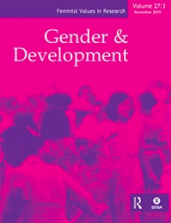Care as Essential Infrastructure: Definitions of and debates on care infrastructure from Kenya, Mexico, Peru, the Philippines, the United States, and Zimbabwe

Overview
Drawing on six case studies (Kenya, Mexico, Peru, the Philippines, the United States, and Zimbabwe), this paper explores the definitions, debates, and demands related to the concept of care infrastructure.
The paper finds the following components of care infrastructure across the case studies: care-supporting physical infrastructure, knowledge production, community networks, national care frameworks and public financing, social protection, and public care services, programs, and regulations. These components of care infrastructure can look different from country to country, based on country-specific factors, including time use related to care, national laws and legal frameworks, and civil society and community mobilization. The existence of different approaches to care infrastructure, even between different stakeholders within countries, highlights the need to consider the local context of any intervention related to care.
The paper also examines the responsibilities of different social actors (communities, civil society, the state, and the private sector) to support care infrastructure, with a focus on the role of the state. Across regions there are significant ongoing debates about the responsibilities of the state supporting and investing in care infrastructure and in advancing care as a right or care as a public good.
Additional details
Publisher(s)
DOI
10.21201/2024.000031How to cite this resource
Citation styles vary so we recommend you check what is appropriate for your context. You may choose to cite Oxfam resources as follows:
Author(s)/Editor(s). (Year of publication). Title and sub-title. Place of publication: name of publisher. DOI (where available). URL
Our FAQs page has some examples of this approach.



